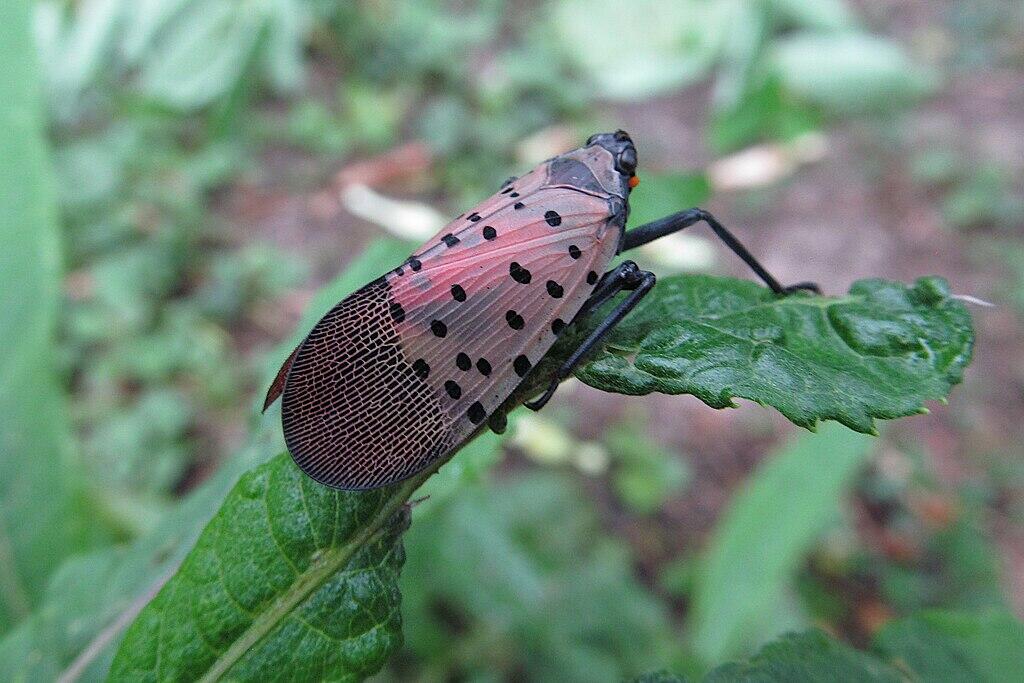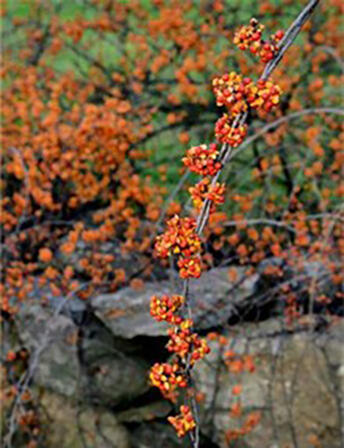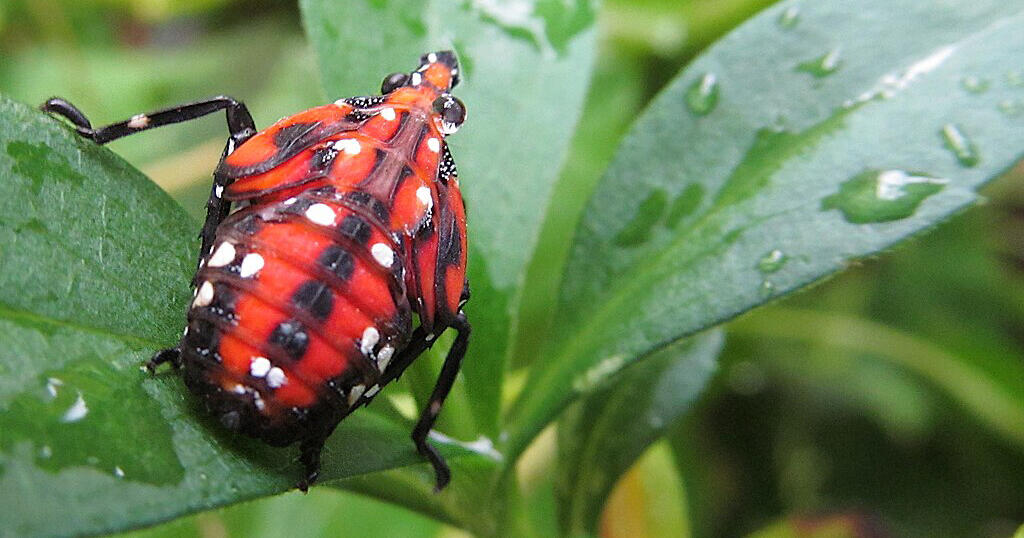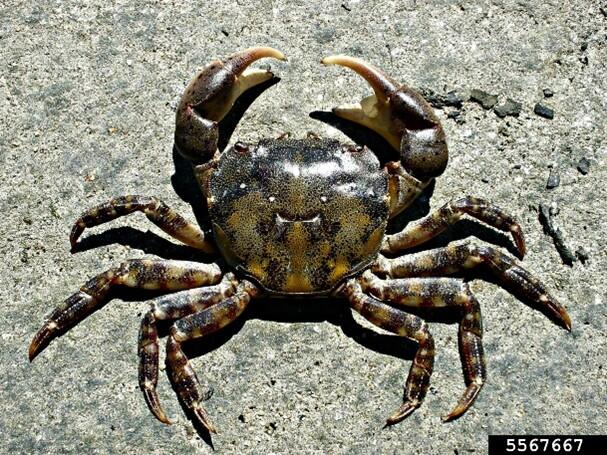- Trial Court Law Libraries

Image above: Adult spotted lanternfly.
When you think of plants and animals specific to the Commonwealth of Massachusetts, your mind may go to the state flower (the Mayflower) or to the state bird (the black-capped chickadee). You may think of the beautiful hydrangeas of Cape Cod, the changing leaves of maple trees, or of all the birds that visit your feeder. However, not everything that you see around you is native to the Commonwealth, and what you do see could be negatively impacting the local ecosystem.
It's important to be able to identify a native versus an invasive species. Change can happen with as little as making an informed decision when decorating your yard!
Definitions
A native species, also known as an endemic or indigenous species, is defined as one that is within its known natural range, and occurs naturally in a given area or habitat (Oxford Reference).
Any species introduced to an area in which it would not naturally occur or live is considered invasive. Definitions of "aquatic invasive species" can be found in 302 CMR 12.02 and 322 CMR 15.02.
Laws in response to invasive species
According to Mass Wildlife’s Natural Heritage & Endangered Species Program, invasive species are “one of the greatest threats to the integrity of natural communities and also a direct threat to the survival of many indigenous species.” As such, Massachusetts, like most states, has implemented laws and regulations to help combat the problem on both land and in the sea. For example, plant nurseries are subject to inspection for invasive pests and plants (MGL c. 128, §§ 16-31 and 330 CMR 9.00), and there are regulations for the possession and sale of non-endemic and non-native species for fisheries (322 CMR 6.10). The Commonwealth has even enacted an Aquatic Nuisance Control Program (MGL c. 21, § 37B).
In order to help protect rare native species and their habitats, in December of 1990 the legislature passed the Massachusetts Endangered Species Act (also referred to as "MESA"; MGL 131A), with subsequent regulations issued by the Division of Fisheries and Wildlife (321 CMR 10.00). Learn more about MESA or use the state's dashboard to browse or search the list of endangered, threatened, and special concern species protected under MESA.
Identifying invasive species
The state has created advisory groups to determine which species qualify as invasive, such as the Massachusetts Invasive Plant Advisory Group (MIPAG) and the Natural Heritage & Endangered Species Advisory Committee. Some common invasive species you may already be familiar with are Oriental bittersweet, Japanese knotweed, Asian shore crabs, zebra mussels, and the spotted lanternfly. However, there are many others you may not be able to so easily recognize. Below are some resources that can help you in the identification of these problematic species.
Terrestrial
Plants
- Invasive plants
- Prohibited plants
- Coastal plant identification: Common native and invasive species found on the Massachusetts coast
Pests
- Introduced Pests Outreach Project, Mass. Department of Agricultural Resources.
Provides a list of invasive insects, snails, nematodes, plants, and diseases; also includes information on the commodities impacted by the invasive species.
Aquatic
- Coastal waters: Marine Invasive Species Program
- Lakes and ponds: List of current and potential aquatic invasive species
Additional resources
Invasive species management, Mass. Audubon.
Includes information on pesticide use and strategies to combat invasive species.
Nursery and plant inspections, Mass. Department of Agricultural Resources.
Nurseries are subject to inspection for invasive pests and plants.
Authored by Gina Varuzzo, Franklin Law Library.



